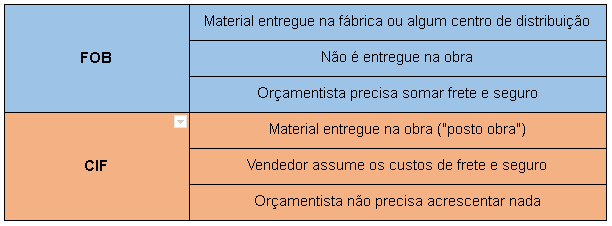Contents
You should consult your attorney or qualified tax advisor regarding your situation. This content should not be depended upon for other than broadly informational purposes. Specific questions should be referred to a qualified tax professional. This information is being provided only as a general source of information and is not intended to be the primary basis for investment decisions.
Keep your eyes on the prize – Fundamentals like remaining diversified and staying the course over the long term are more important than short-term tax considerations. Ultimately, you want to make sure any tax loss harvesting activities don’t alter fundamental elements of your client’s portfolio, such as asset allocation and risk exposure. Selling a few underperforming holdings to save thousands in taxes may seem like an easy choice, but there are several factors that should go into a decision to pursue tax loss harvesting. However, it’s important to remember that tax loss harvesting only defers tax payments; it doesn’t eliminate them. But delaying the payment of taxes can allow your clients to keep more assets invested for potential growth. The platform has so far purchased over 9,300 no-longer valuable NFTs that previous owners can count as losses to reduce taxable capital gains.

It should not be construed as advice designed to meet the particular needs of an individual investor. Please seek the advice of a financial advisor regarding your particular financial concerns. Tax-loss harvesting can be part of a year-round investment and tax strategy. However, taxes alone should not be the main driver of your investment strategy. For investors with taxable portfolios, what really matters is not what their investments make, but what the investor gets to keep, after taxes. \nFor investors with taxable portfolios, what really matters is not what their investments make, but what the investor gets to keep, after taxes.
The material available on this site has been produced by independent providers that are not affiliated with Russell Investments. Descriptions of, references to, or links to products or publications within any linked web site does not imply endorsement of that product or publication by Russell Investments. Any opinions or recommendations expressed are solely those of the independent providers and are not the opinions or recommendations of Russell Investments, which is not responsible for any inaccuracies or errors.
Tax Loss Harvesting
For most people, delaying taxes is wise—and when executed successfully, a tax loss harvesting strategy can help minimize your clients’ current taxes and keep more money invested for the long term. For tax purposes, the cost basis is subtracted from the investment’s value at the time of sale, minus fees and commissions, to determine any capital gain or loss. When you pay taxes on yourrealizedcapital gainsfor the year, you’ll only consider yournetgains—the amount you gained minus any investment losses you realized. In the real world, a tax loss harvester waiting 31 days to reinvest will see volatility in the investment. If the price of the investment goes up while the investor is on the sidelines she is disadvantaged; if the price goes down, she is advantaged.
- And because these portfolios replace harvested losses with stocks purchased at reduced prices, they tend to have a low cost-basis.
- They find it difficult to sell an investment at a lower price than they bought it at.
- Bankrate.com is an independent, advertising-supported publisher and comparison service.
- You are solely responsible for evaluating and acting upon the education and information contained in this material.
- Chances are you do not sell shares purchased in your life time, in which case, the shares purchased in March 2008 receive stepped up cost basis upon your death.
The information provided here is for general informational purposes only and should not be considered an individualized recommendation or personalized investment advice. The investment strategies mentioned here may not be suitable for everyone. Each investor needs to review an investment strategy for his or her own particular situation before making any investment decision. She originally purchased it for $10,000, but it’s now worth only $7,000.
In addition to offsetting losses against gains, new investments may enhance portfolio performance as the market recovers. Robo-advisor tax-loss harvesting is the automated selling of securities in a portfolio to deliberately incur losses to offset any capital gains or taxable income. If your capital losses exceed your capital gains for the year, you can deduct up to $3,000 of these losses to offset regular income.
Don’t undermine investment goals
Specifically, you benefit from tax loss harvesting as long as the tax you pay on the $1,000 extra capital gains ($10,000 – $9,000) in the first example above is less than the after-tax amount that $250 grows to. However, $250 grows to $499.75 with the after-tax amount being $424.83, so you are not losing money yet. The strategies discussed are strictly for illustrative and educational purposes and are not a recommendation, offer or solicitation to buy or sell any securities or to adopt any investment strategy. There is no guarantee that any strategies discussed will be effective.
By using your losses to lower your taxes on capital gains and income, you can save money. However, if the value of the new investment increases above $30,000 to $35,000, then the investor will have lost money—despite the value increase. For many investors, tax-loss harvesting is a critical tool for reducing their overall taxes.

A tutorial which includes screen shots and explanations of allowed and disallowed losses. BlackRock Fund Advisors, an affiliate of BlackRock Investments, LLC, is a registered investment adviser. Visit our Tax Center to explore portfolio construction ideas and insights to help you design portfolios with tax impact in mind. Institutions I consult or invest on behalf of a financial institution. Default At Ameriprise, the financial advice we give each of our clients is personalized, based on your goals and no one else’s.
Can Tax Loss Harvesting Improve Your Investing Returns?
At the time of writing, the service has so far purchased over 9,300 NFTs, according to Etherscan. Using an updated version will help protect your accounts and provide a better experience. ProShares ETFs are distributed by SEI Investments Distribution Co., which is not affiliated with the funds’ advisor or sponsor. ProShares are distributed by SEI Investments Distribution Co., which is not affiliated with the funds’ advisor.

Short-term capital gains are taxed as ordinary income at the marginal tax rate, which can be up to 37%, depending on income bracket. IRS rules prohibit an investor from buying the same investment within 30 days if the loss is used to offset capital gains taxes. The investor sold investments and realizedlong-term capital gains, which are subject to a tax rate of 20%. Currently, https://cryptolisting.org/ crypto assets are not technically covered by the wash sale rule, which only applies to securities. However, multiple pieces of proposed legislation have aimed to ban crypto wash sales. Although none have been passed, investors should be aware that the issue is on the legislative agenda, and they should check with their crypto tax advisors before engaging in wash sales.
An increase in the value of an investment over the initial purchase price. A capital gain is “unrealized” until the investment is sold, when it becomes a “realized” gain. Realized gains are taxable, but the tax burden is deferred if you hold the investment in an IRA or a 401. Chances are you do not sell shares purchased in your life time, in which case, the shares purchased in March 2008 receive stepped up cost basis upon your death. If $60,000 is enough for your living expenses, you may have little or no taxable income because the gain is offset by the realized loss carryforward, and the return of capital, $50,000, is tax free. If this is the case, you might consider Post-Retirement Roth Conversion to take advantage of the standard/itemized deduction and low tax brackets.
Situations to Consider Tax-Loss Harvesting
Sofia could use the $3,000 capital loss from XYZ to reduce her taxable income for the current year. If her combined marginal tax rate is 30%, she could receive a current income tax benefit of up to $900 ($3,000 × 30%). She could then turn around and invest her tax savings back in the market. If she assumes an average annual return of 6%, reinvesting $900 each year could potentially amount to approximately $35,000 after 20 years. By offsetting the capital gains of Investment A with your capital loss of Investment B, you could potentially save $7,000 on taxes ($20,000 × 35%).
Tax loss harvesting is when you sell some investments at a loss to offset gains you’ve realized by selling other stocks at a profit. The result is that you only pay taxes on your net profit, or the amount you’ve gained minus the amount you lost, thereby reducing your tax bill. If you still have capital losses after applying them first to capital gains and then to ordinary income, you can carry them forward for use in future years. If you have more capital losses than gains, you may be able to use up to $3,000 a year to offset ordinary income on federal income taxes, and carry over the rest to future years.
Thomas earns $120,000 a year and is in the 24% tax bracket for both ordinary income and short-term capital gains. Harvesting losses from a mutual fund that has declined by $15,000 and a stock that has lost $5,000 in value over the six months since he bought it, Thomas’ tax liability is decreased by $3,450. Suppose that you had invested $10,000 into a mutual fund in a taxable account and that with the steep decline in 2008, your holdings are now worth only $6,000. Since you plan to continue holding that fund, you might be inclined to ignore the losses and wait for the fund to eventually recover. Instead, using tax loss harvesting, you’d sell the fund, and then buy it back 31 days later. In the meantime, you can either hold the cash in a money market fund, or invest it in a similar but not substantially identical fund.
If you’re a mutual fund investor, your short- and long-term gains may be in the form of mutual fund distributions. Keep a close eye on your funds’ projected distribution dates for capital gains. Short-term capital gains and losses are those realized from the sale of investments that you have owned for 1 year or less. Tax-loss harvesting is the selling of securities at a loss in order to offset the amount of capital gains tax due on other investments.
When it comes to harvesting tax losses throughout the year, does timing matter?
This Summary is based exclusively on an analysis of general current market conditions, rather than the appropriateness of a specific proposed securities transaction. Note that for month-end dates, again, the best time to harvest losses was not at the month-end. Brokerages will report your gains and losses to you and the IRS. However, their figures aren’t always right, especially in complicated tax situations, so it can be worthwhile to keep good records of your transactions. That’s one of the major benefits of a robo-advisor, and many offer automatic rebalancing as part of the deal, too.
$0 online listed equity trade commissions + Satisfaction Guarantee.
Minimizing your tax liability can boost your net worth over time. Tax-loss harvesting takes advantage of the fact that capital losses can be used to offset capital what is dycoin gains. An investor can “bank” capital losses from unprofitable investments in order to pay less capital gains tax on profitable investments sold during the year.
